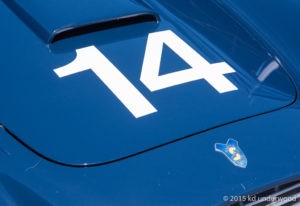 Over 400 vintage racing cars converge on Sonoma Raceway in California each June to celebrate historic motorsports. Founded in 1986 by Steve Earle, Sonoma Historic Motorsports Festival still retains some of the charm from those early days. While the lunch break no longer includes a white tent in pit lane with oyster shuckers from Point Reyes and wines from Sonoma County, (like it did my first year there), it’s still a laid-back and accessible event. The racing paddocks are open where spectators can look at the cars close-up and talk with owners in an casual environment. You can even walk the 2.52-mile road course. It’s an enjoyable way to learn about your favorite racing marque.
Over 400 vintage racing cars converge on Sonoma Raceway in California each June to celebrate historic motorsports. Founded in 1986 by Steve Earle, Sonoma Historic Motorsports Festival still retains some of the charm from those early days. While the lunch break no longer includes a white tent in pit lane with oyster shuckers from Point Reyes and wines from Sonoma County, (like it did my first year there), it’s still a laid-back and accessible event. The racing paddocks are open where spectators can look at the cars close-up and talk with owners in an casual environment. You can even walk the 2.52-mile road course. It’s an enjoyable way to learn about your favorite racing marque.
Nowhere is the adage “form follows function” more on display than in vintage motorsport. The simplicity in how early engineers and designers approached problems is a thing of beauty. Cooling is addressed by adding large vents to the side of the car, as in the Mercedes 300SL, or rows of louvered vents as on the Bugatti Type59. Rather than adding the traditional air scoop on the top of the hood to solve cooling and induction issues like others, Alfa Romeo most ingeniously solved under hood temperature issues on Bertone designed 105/115 series Giulia coupe by raising the leading edge of the hood effectively allowing it to become one large air scoop. These ’63-’68 Alfa Romeos are now affectionately known as “Step-Nose”.
Even though I’ve seen thousands of vintage race cars and recognize many individually at every event I attend, I still notice different, interesting and in many ways, unique design and engineering solutions for common racing problems. These pictures share that discovery.
Great work.